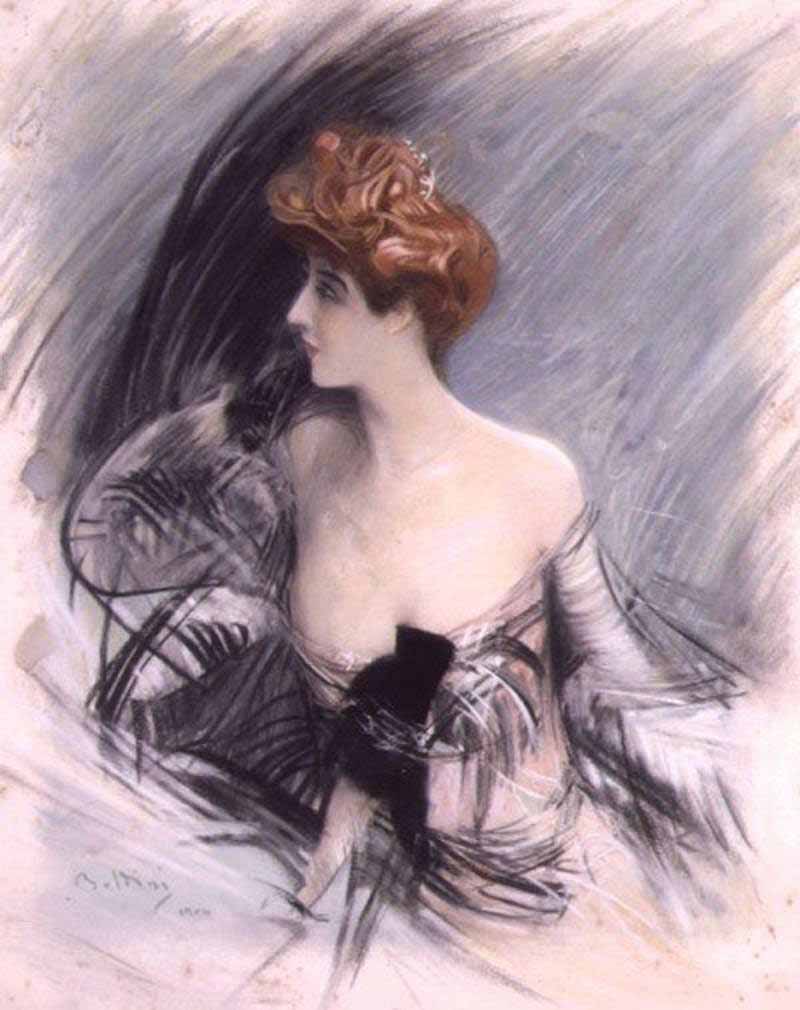History, Holidays & Observances on December 31, the 7th Day of Christmas & New Year’s Eve
Today: New Years Eve, 7th Day of Christmas, St. Sylvester, East India Company, American Invasion of Canada, Migration Period, James I the Conqueror, Reconquista, Arthur Guinness, Marshall Plan, Bonnie Prince Charlie, Lord Cornwallis, Pax Romana, John Wycliffe, and More
Holidays and Observances on December 31
Today is the 7th Day of the 12 Days of Christmas, Sylvester’s Day, New Year’s Eve in America and Hogmanay in Scotland.
Celebrating New Years Eve:
 How the U.S. ended up celebrating the New Year on January 1 as a secular holiday is a story with several twists and turns.
How the U.S. ended up celebrating the New Year on January 1 as a secular holiday is a story with several twists and turns.
Quite a number of ancient civilizations, such as the Babylonians, counted a new year from the around the time of the spring equinox and the start of the new planting season. Counting the New Year from January 1 only started in the year 46 B.C. in ancient Rome, when Julius Caesar introduced the “Julian Calendar.” He ordered pagan celebrations be held then to honor Janus, the Roman god of beginnings and gateways.
Three centuries later, Christianity became the religion of the Roman Empire. As they did with Christmas, Sol Invictus and Saturnalia, the Papacy sought to redirect the pagan celebration to a Christian celebration. The Papacy, in 336 A.D., placed the Feast of St. Sylvester atop the Dec. 31 celebration of Janus. The celebrations on Dec. 31 dedicated to a pagan god died out when the Roman Empire fell and Europe fell into the Dark Ages, though the Feast of St. Sylvester continued through to today.
During the Middle Ages, the countries that grew in what had been the territories of the Roman Empire reverted to the ancient tradition of counting the new year around the time of the Spring Equinox. So, for example, in England, they counted March 25, Lady Day, as the start of a new year.
After the Reformation, Protestant denominations stop venerating Catholic saints. That stripped Dec. 31 of its religious significance as a day of feast in honor of St. Sylvester.
The Scots were among the first to have both a formal secular celebration on Dec. 31 and to count January 1 as the first day of the new year. At least by the late 15th century, the Scots celebrated Hogmanay on Dec. 31 through Jan. 1. It was a celebration with pagan roots in Yule and the winter solstice, but it was stripped of that significance by the 15th century. Then, in 1600, the Scots adopted the Gregorian calendar and began marking Jan. 1 as the start to the new year.
Indeed, it seems that most countries that adopted the Gregorian calendar de facto adopted marking the new year as January 1. The Gregorian Calendar was proposed by Pope Gregory XIII in 1582 as a correction to the Julian calendar. Most nations use it today.
It would be another 152 years before Britain – and thus the British colonies, adopted the Gregorian Calendar in 1752. That year they began counting Jan. 1 as the New Year instead of Lady’s Day. With that, and with the British colonies in America populated in large numbers by Scots, it seems inevitable that a secular tradition of celebrating the New Year would take hold in this country as well.
Hogmanay
After Reformation and Presbyterianism taking hold in Scotland, the Scottish Presbyterians, like the Puritans in Britain and many other Calvinist sects, no longer celebrated Christmas. Hogmanay grew as a national tradition in the country.
Customs vary throughout Scotland, and usually “include gift-giving and visiting the homes of friends and neighbours, with special attention given to the “first-foot, the first guest of the new year.” You would want the “first-foot” into your home to bring “good luck, warmth, good food, hospitality and good cheer for the coming year.” The luck came from insuring that the first footer was a dark haired man, as were many of the Scots. The custom probably derives from the days of the Viking invasions, when having a blond-haired man showing up at your door wielding an axe was considered bad luck. As to the rest, the first footer usually brings with him “a lump of coal, some salt, black bun (a type of pastry-covered fruitcake ), shortbread and a ‘dram’ of whiskey.”
On Hogmanay, “the largest Scottish cities – Glasgow, Edinburgh and Aberdeen – hold all-night celebrations, as do Stirling and Inverness. The Edinburgh Hogmanay celebrations are among the largest in the world” with hundreds of thousands attending.
One of the Hogmanay customs that has spread to the U.S. is the singing of the poem, Auld Lang Syne, which Robert Burns wrote in 1788 in his only barely comprehensible Scottish version of English. Auld Lang Syne can be loosely translated as “for old times sake.”
And here’s an elegant little song that weaves in an homage to Auld Lang Syne — and be patient, for it gets better and better as it goes on:
Memorial, Feast of St. Sylvester I
Sylvester I became Pope in 314, the year after Constantine the Great had made it lawful to practice Christianity in the Roman Empire with the Edict of Milan, and Sylvester held the papacy until his death in 335. Many of the notable events that occurred during his papacy are associated mostly with Constantine, although it is unclear what relationship Sylvester had with Constantine and what role Sylvester played in those events.
The pope . . . took part in the negotiations concerning Arianism and the Council of Nicæa . . . The pontiff also sent legates to the first ecumenical council. Still it is not certain whether Constantine had arranged beforehand with Sylvester concerning the actual convening of the council, nor whether there was an express papal confirmation of the decrees beyond the signatures of the papal legates . . .
During Sylvester’s pontificate were built the great churches founded at Rome by Constantine, e.g. the basilica and baptistery of the Lateran near the former imperial palace where the pope lived, the basilica of the Sessorian palace (Santa Croce), the Church of St. Peter in the Vatican, and several cemeterial churches over the graves of martyrs. No doubt the pope helped towards the construction of these churches. Sylvester’s memory is especially connected with the titular Church of Equitius . . .
The combined legacy of Pope Sylvester and Constantine is tied together in another way as well. It involved a forged document, probably created in the 8th century long after both men had passed, one that played a significant role in the struggle between the papacy and the secular kings for power in Europe. It was the so-called “Donation of Constantine.”
[The forgery] seemed to successfully support the later Gelasian doctrine of papal supremacy, papal auctoritas (authority) guiding imperial potestas (power) . . . In the fiction . . . the Emperor Constantine was cured of leprosy by the virtue of the baptismal water administered by Sylvester.
The Emperor, abjectly grateful, not only confirmed the bishop of Rome as the primate above all other bishops, he resigned his imperial insignia and walked before Sylvester’s horse holding the Pope’s bridle as the papal groom. The Pope, in return, offered the crown of his own good will to Constantine, who abandoned Rome to the pope and took up residence in Constantinople. “The doctrine behind this charming story is a radical one,” Norman F. Cantor observes: “The pope is supreme over all rulers, even the Roman emperor, who owes his crown to the pope and therefore may be deposed by papal decree”. Such a useful legend quickly gained wide circulation . . .
And as pointed out here:
The first pope to directly invoke the decree was Pope Leo IX, in a letter sent in 1054 to Michael I Cerularius, Patriarch of Constantinople. He cited a large portion of the document, believing it genuine, furthering the debate that would ultimately lead to the East–West Schism. In the 11th and 12th centuries, the Donation was often cited in the investiture conflicts between the papacy and the secular powers in the West.
In his Divine Comedy, written in the early 14th century, the poet Dante Alighieri wrote:
“Ah, Constantine, how much evil was born, not from your conversion, but from that donation that the first wealthy Pope received from you!”
The forgery was accepted as authentic until, in the 15th century, the Catholic priest Lorenzo Valla determined that the text was a forgery based on his analysis of the language used in the manuscript.
Major Events on December 31
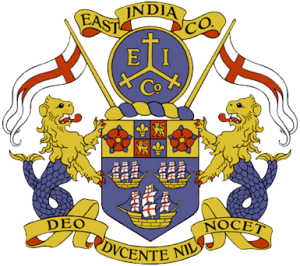 1600 – Queen Elizabeth issues a charter establishing the British East India Company. The charter granted the corporation “the exclusive right to trade with all countries to the east of the Cape of Good Hope.” Its first century of growth was expansive:
1600 – Queen Elizabeth issues a charter establishing the British East India Company. The charter granted the corporation “the exclusive right to trade with all countries to the east of the Cape of Good Hope.” Its first century of growth was expansive:
Labeled by both contemporaries and historians as “the grandest society of merchants in the universe”, the English East India Company would come to symbolize the dazzlingly rich potential of the corporation . . . By 1711, shareholders in the East India Company were earning a return on their investment of almost 150 per cent. Subsequent stock offerings demonstrated just how lucrative the Company had become. Its first stock offering in 1713–1716 raised £418,000, its second in 1717–1722 raised £1.6 million.
The EIC developed its own naval ships to protect trade, then its own army, waging war on the Indian sub-continent with France and with Indian princes until it controlled most of India. By 1803, the EIC’s private army was 260,000 men, twice the size of the British Army.
At its greatest extent, the EIC accounted for half of all the world’s trade. The East India Company proved irresistible to the politicians who viewed it as a cash cow to fund the government. The EIC suffered a major financial crisis in 1770 because of a drought in India and high government taxes and charges. The government stepped in, turning the corporation into a quasi public entity, and tried to sell off its surplus of overtaxed tea in the American colonies. That event in turn led to the tea parties and, ultimately, the American Revolution.
The EIC regained its financial footing, but gradually fell ever more under the thumb of the British government. In 1858, the British government absorbed the EIC’s army and navy and took over all of the EIC trading functions, rendering it a shell that was finally dissolved in 1874.
1775 – American Revolutionary War: Battle of Quebec
The First and Second Continental Congress had tried and failed to convince British-held Canada to join with the lower 13 colonies in their resistance to Britain. Congress recognized that Canada posed a strategic threat to the colonies, so soon after the war began, Congress authorized Gen. Phillip Schuler to invade Canada. He eventually fell ill and was replaced by Gen. Montgomery. Benedict Arnold, passed over for command, approached George Washington who authorized him to lead a second invasion force into Canada.
Montgomery marched on Montreal and, after a short siege, the garrison surrendered on 3 Nov. 1775. He then marched towards Quebec. Arnold, taking a very difficult route through the wilderness, arrived with his force outside of Quebec in late November. Montgomery linked up with Arnold on Dec. 3, and they entered the Plain of Abraham, and laid siege to the city.
Small pox soon began to run rampant through the continental forces. Arnold would later accuse the British commander, Carleton, of sending people from the city who were infected with the disease outside the walls to mix with the Continentals.
Besides lacking cannon of sufficient size to force the siege – Montgomery had 6 and 12 lbs cannon that had no effect on the defensive walls of Quebec – and having to deal with an increasing number of soldiers too ill to take part in combat, the most immediate problem Montgomery and Arnold faced was that a majority of their soldiers had enlistments expiring at sunrise on January 1. The Continental Congress had yet to come to grips with its fear of standing armies and, in 1775, was only authorizing short term enlistments.
Montgomery and Arnold decided that they had to mount an assault on the city before the New Year. They waited for cover of a snow storm. A blizzard arrived this night in 1775 and the commanders launched their assault. An alert guard, hearing the approach of the Continentals, sounded the alarm and the Canadians were able to successfully defend the city.
It was a disaster for the Continental forces. By the time the sun rose on the New Year, General Montgomery was dead and Benedict Arnold was severely wounded. The British also captured four hundred soldiers, including Col. Daniel Morgan, commander of the Virginia Riflemen.
Continental forces would remain in vicinity of Quebec and be reinforced early in 1776, but British reinforcements would arrive with the Spring thaws. Benedict Arnold would lead the Continentals in a superb defense as they withdrew out of Canada.
1879 – Thomas Edison demonstrates incandescent lighting to the public for the first time, in Menlo Park, New Jersey.
Can we even imagine a world today with no electricity? Americans moved quickly from Ben Franklin’s experiments with electricity in 1750’s to being able to generate and control electricity a century on. But to what end? Though a lot of people speculated what electricity’s benefits might bring to humanity, there was still no viable commercial application for it . . . until this date in 1879, when Thomas Edison demonstrated to the public that he and his team had solved the problem of the light bulb using a cotton filament. Over the next three years, Edison would perfect his experiments with the incandescent light bulb:
[Edison] and his researchers found that the ideal filament substance was carbonized bamboo, which produced over 1,200 hours of continuous light. The first large-scale test of Edison’s lights occurred September 4, 1882 when 25 buildings in New York City’s financial district were illuminated.
“The electric light has caused me the greatest amount of study and has required the most elaborate experiments,” Edison later wrote. “I was never myself discouraged, or inclined to be hopeless of success. I cannot say the same for all my associates.”
With the light bulb perfected, the push to provide electricity to every home and business in America began. “Electricity turned from a scientific curiosity into an essential tool for modern life.”
In 2007, President George Bush signed a bill effectively banning incandescent light bulbs in favor of the less efficient (quality of light) and more dangerous – but far more profitable – LED and CFL light bulbs. President Trump is in the process of overturning those rules.
Notable Events on December 31
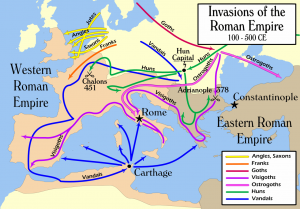 406 – Vandals, Alans and Suebians cross the Rhine, beginning an invasion of Gaul. It was the beginning of the end of the Roman Empire. This was part of the Migration Period in Europe, when vast groups of people from other cultures invaded the Roman Empire, bringing with them the Dark Ages. The first Migration Period ended about 586 A.D. The second great Migration was initiated by Angela Merkel and the EU. We’ll see how that one turns out in the coming decades.
406 – Vandals, Alans and Suebians cross the Rhine, beginning an invasion of Gaul. It was the beginning of the end of the Roman Empire. This was part of the Migration Period in Europe, when vast groups of people from other cultures invaded the Roman Empire, bringing with them the Dark Ages. The first Migration Period ended about 586 A.D. The second great Migration was initiated by Angela Merkel and the EU. We’ll see how that one turns out in the coming decades.
1229 – James I the Conqueror, completed the reconquest of the Majorca Islands, driving out the Muslim occupiers under the Almohad, Abú Yahya. The Knights Templar had raised James after they defeated his father in battle. During his long reign of 63 years as the King of Aragon, James I became famous as a great military leader, legislator and organizer.
1759 – Arthur Guinness signs a 9,000 year lease at £45 per annum on a four acre estate in Dublin and starts brewing Guinness. His brewery started off producing porters, then gradually came to produce Guinness Stout, the drink for which Guinness justly became famous. It is strongly flavored, but comes with a relatively low alcohol content.
1878 – Karl Benz, working in Mannheim, Germany, filed for a patent on his first reliable two-stroke gas engine, and he was granted the patent in 1879. He would follow that with patents for successive inventions including a speed regulation system, the ignition using sparks with battery, the spark plug, the carburetor, the clutch, the gear shift, and the water radiator. In 1885, his company began production of the “motorwagen.”
1951 – The Marshall Plan expired after distributing more than US$13.3 billion in foreign aid to rebuild Western Europe. Unfortunately for America, in the long run, what we earned from the Marshall Plan was resentment from the recipients and, until President Trump, their continued free riding on the U.S. to underwrite the costs of European defense, and by extension, their vaunted welfare states.
1955 – General Motors becomes the first U.S. corporation to pay taxes greater than $1 billion in a year. It was the height of the company productivity. A combination of unions, arrogance, and competition would bring GM many challenges in the future.
1983 – The AT&T Bell System is labeled a monopoly and broken up by the United States Government. Now if they’d just get to Google. . . .
1999 – The first President of Russia, Boris Yeltsin, resigns from office, leaving Prime Minister Vladimir Putin as the acting President and successor.
1999 – The United States Government hands control of the Panama Canal (as well all the adjacent land to the canal known as the Panama Canal Zone) to Panama. This act complied with the signing of the 1977 Torrijos–Carter Treaties.
Born on December 31
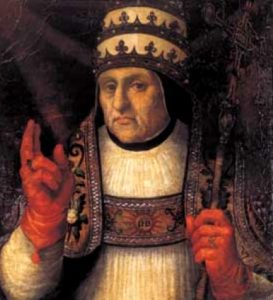 1378 – Pope Callixtus III, a member of the Borgia family. He was Pope during the fall of Constantinople to the Muslim Turks. He did his best to raise a Crusader Army to drive the Turks out of Constantinople and Byzantium, but national rivalries among the European states doomed his efforts.
1378 – Pope Callixtus III, a member of the Borgia family. He was Pope during the fall of Constantinople to the Muslim Turks. He did his best to raise a Crusader Army to drive the Turks out of Constantinople and Byzantium, but national rivalries among the European states doomed his efforts.
1720 – Bonnie Prince Charlie, Scottish claimant to the throne of England best known for his role in the Jacobite rebellion of 1745 that King George II defeated. The French hatched a plan to invade England during the Seven Years War and install Charlie on the British throne, but the plan ended when British naval victories in 1759 neutralized the French Navy.
1738 – Charles Cornwallis, 1st Marquess Cornwallis. He was a whig who, as a member of the House of Lords, supported the colonists during the Stamp Act. Subsequently, he was one of the primary generals leading British troops during the American Revolution. A superb battlefield commander, he was a poor strategist who ended up trapped at Yorktown by George Washington and the French Navy. Despite that failure, he was the only primary general who emerged from the Revolution with his reputation intact.
1842 – Giovanni Boldini, an Italian painter who lived in Paris. He was known as the “Master of Swish” for his flowing style. The painting below is A Portrait of Sarah Bernhardt completed in 1904.
Died on December 31
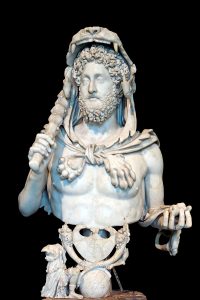 192 – Commodus, Roman emperor whose reign marked the end of the golden period in the history of the Roman Empire known as the Pax Romana. His assassination in 192 ushered in civil war and the tumultuous Year of the Five Emperors. Europe would not see another extended period of peace until the the Pax Britannica from 1815 to 1914, then the Pax Americana after WWII.
192 – Commodus, Roman emperor whose reign marked the end of the golden period in the history of the Roman Empire known as the Pax Romana. His assassination in 192 ushered in civil war and the tumultuous Year of the Five Emperors. Europe would not see another extended period of peace until the the Pax Britannica from 1815 to 1914, then the Pax Americana after WWII.
1384 – John Wycliffe, an Oxford professor, theologian, biblical translator, reformer, and priest. He became an influential dissident within the Roman Catholic priesthood during the 14th century. He is most famous for translating the Bible from Latin into English in order to make it accessible to the people of England. He died of a stroke before the Church was able to organize against him. The Church excommunicated him posthumously.

